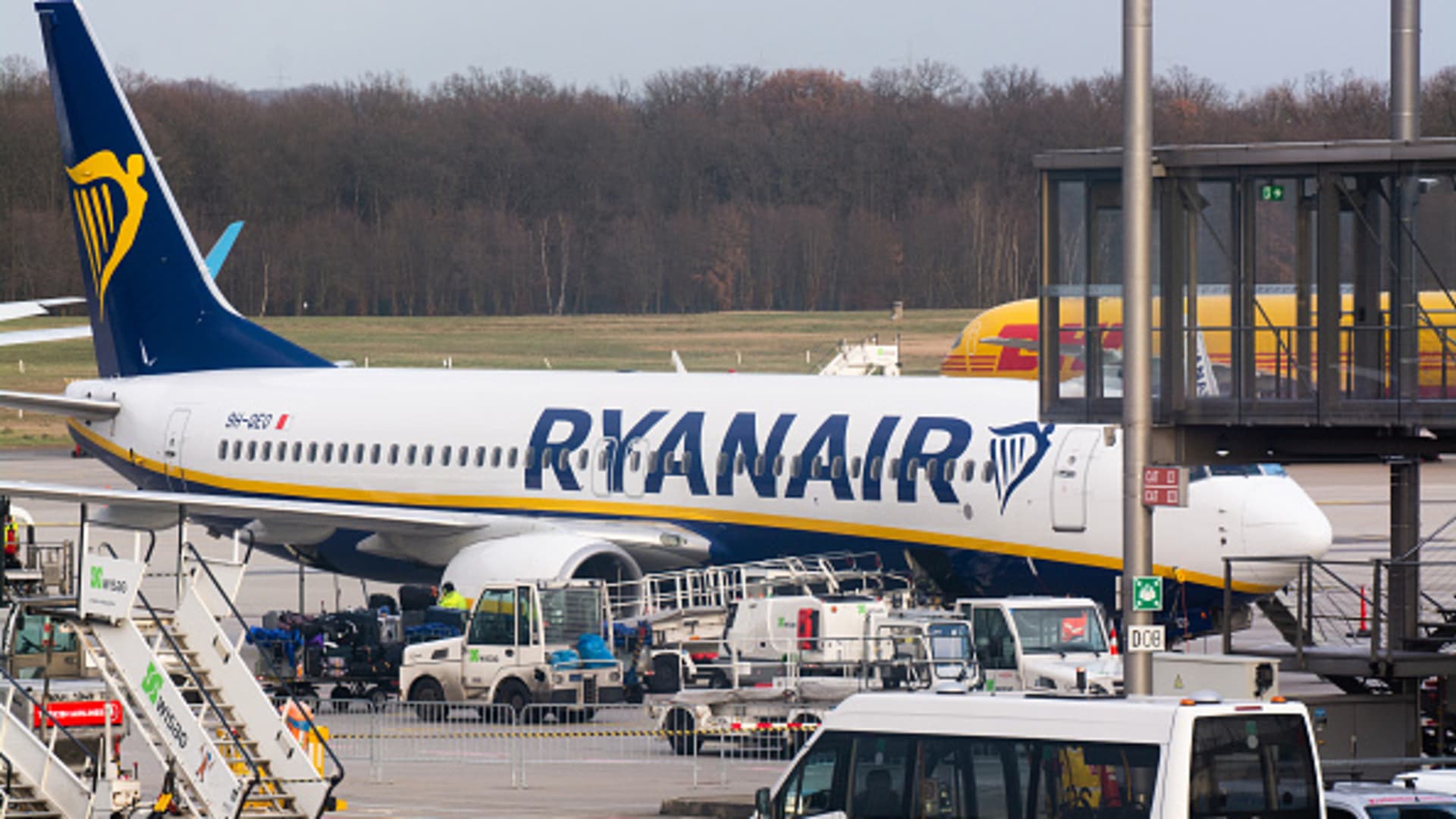Ryanair on Monday posted a full-year net profit of 1.43 billion euros ($1.55 billion), aided by resurgent traffic and fares, along with favorable oil hedging positions.
Despite a rough first quarter in 2022 as a result of Russia’s invasion of Ukraine, travel demand rebounded over the course of the year. The Irish low-cost carrier reported a 74% increase in full-year traffic to 168.6 million customers, while fares were up 10% on pre-Covid levels.
Operating costs rose 75% to 9.2 billion euros as a result of a 113% increase in fuel costs, but the airline said “favorable” hedges helped offset this, while unit costs came in at 31 euros per passenger, considerably lower than other European rivals.
“Our industry leading fuel hedging (over 80% hedged at approx. $64bbl) contributed significantly to the final FY23 profit outcome, saving the Group over €1.4bn,” CEO Michael O’Leary said in Monday’s earnings report.
Airlines hedge against the risk of potential increases in oil prices by buying a certain amount of fuel via forward contracts at a fixed price, for delivery in the future.
International benchmark Brent crude was trading at just over $75 per barrel on Monday morning.
Ryanair is 85% hedged at $89 per barrel this year, and company Chief Financial Officer Neil Sorohan told CNBC on Monday that this will add around $1 billion extra to this year’s fuel bill. But he said Ryanair is confident it can cover the cost increase and grow profits “modestly” on a year-on-year basis.
“Our balance sheet is one of the strongest in the industry with a BBB+ credit rating and €4.7bn gross cash at year-end, despite an €850m bond repayment in March 2023,” O’Leary said in the report.
“Almost all the Group’s B737 fleet are owned and 99% are unencumbered, which significantly widens our cost advantage, as interest rates and leasing costs continue to rise for competitors.”
Ryanair earlier this month signed an agreement to purchase 300 new Boeing 737-MAX-10 aircraft — 150 firm orders and 150 future options — with phased deliveries scheduled between 2027 and 2033. The purchase, delayed over a price dispute in 2021, relates to Ryanair’s ambition to carry 300 million passengers per annum by 2034.
“Apart from delivering significant revenue growth, the additional seats (coupled with greater fuel, carbon and noise efficiency) will further widen Ryanair’s considerable unit-cost advantage over all European competitor airline,” O’Leary said in Monday’s report.
CFO Sorohan said the airline’s low cost base is its biggest advantage as it seeks to expand its presence and market share throughout Europe, but said the biggest risk to this growth strategy was the aviation industry itself.
“Something always goes wrong every few years but because we have the balance sheet, because we have the cost base that we have, we’ll be able to weather whatever storms come our way,” he added.
Consolidation ‘inevitable’
Capacity across European airlines has undergone a “systemic change” in light of the Covid-19 pandemic, Sorohan said, since many airlines were forced to downsize. Meanwhile, OEMs (original equipment manufacturers) are struggling to meet demand and leasing companies have been hit by sanctions on Russia.
But data shows that travel is high on people’s priorities, Sorohan said, which is why Ryanair feels comfortable placing a 300-aircraft order this month and setting out such ambitious traffic growth targets.
However, he stressed that consolidation across the industry in Europe is “inevitable” — and in fact has “already started.”
“Norwegian are half the size they were, but if you look at Italy, 40% has been consolidated from ITA, the former Alitalia, into Lufthansa with a view to getting to 100%. TAP in Portugal is up for sale, inevitably some capacity will come out on the back of that, and there’s more of this to go,” he said.
“I wouldn’t be surprised to see two of the other low-cost carriers in Europe being consolidated in the next couple of years. I think that’s inevitable as well that you’re going to see more of that coming together and we move more like the U.S. model, with just four or five large carriers effectively flying 80% of the traffic around Europe.”
Larger European former “flag carrier” airlines suffered a significant hit during the pandemic, with a number propped up by controversial state aid from their respective governments.
The EU General Court earlier this month annulled the German government’s 6 billion euro recapitalization package to Lufthansa (initially approved by the European Commission) and the Swedish and Danish governments’ 1 billion euro package for SAS, ruling that the state aid unfairly tilted competition towards Ryanair’s rivals.
“We’ve seen a systemic change in capacity, and I think we will be left with some of the historic large flag carriers — Air France KLMs, Lufthansas — but ultimately short-haul, point-to-point, will be something that Ryanair will be a key player in,” Sorohan added.
